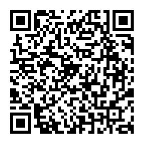

2020 , Vol. 2 >Issue 2: 59 - 66
DOI: https://doi.org/10.12133/j.smartag.2020.2.2.202005-SA003
Near-Field Telemetry Detection of Soil Nutrient Based on Modulated Near-Infrared Reflectance Spectrum
Received date: 2020-05-08
Revised date: 2020-05-29
Online published: 2020-08-10
Proper soil nutrients content plays an important role in agricultural production—undernutrition would reduce crop yield and quality and overnutrition would cause environmental pollution. Though the traditional approaches based on sampling and chemical analysis can comprehensively and accurately measure soil nutrients, but the soil sampling and pretreatment process are cumbersome, complicated, time-consuming, and costly. Therefore, rapid and accurate measurement of soil nutrients is of great significance for precise fertilizer application, which can increase yield, improve crop quality, and alleviate environmental pollution. Toward this objective, a rapid soil nutrients detection method based on modulated near infrared spectroscopy for active near-field telemetry was proposed, which could effectively minimize effect of sunlight during the measuring process. Eight channels narrow-band laser diodes with wavelengths of 1260, 1310, 1350, 1410, 1450, 1510, 1550 and 1610 nm were selected as active lighting sources for measuring the reflectance of soil samples. Eight channels narrow-band laser diodes were symmetrically placed on a concentric circle. A photodetector with a circular photosensitive area of 5 mm in diameter was placed at the center of the concentric circle to maximize the reception of laser beam reflected by soil. A focusing lens was placed in front of the photodetector to collect the laser beam reflected from the soil sample to increase the sensitivity. The sensing area of the photodetector was located at the focus of the lens. seventy four groups of soil samples with known N content were divided into training set (54 groups) and prediction set (20 groups) for data analysis. The spectral reflectance significantly correlated with soil N content was screened by analyzing the training set based on a general linear model and a quantitative measurement model with R 2 of 0.97 between the screened spectral reflectance and soil N content was achieve. The predicted soil N content obtained from prediction set based on the established model and the referenced soil N content of the prediction set had a R 2 of 0.9, indicating that this method has an ability to quickly, as well as accurately detect soil nutrients.
JIAO Leizi , DONG Daming , ZHAO Xiande , TIAN Hongwu . Near-Field Telemetry Detection of Soil Nutrient Based on Modulated Near-Infrared Reflectance Spectrum[J]. Smart Agriculture, 2020 , 2(2) : 59 -66 . DOI: 10.12133/j.smartag.2020.2.2.202005-SA003

| 1 |
|
| 2 |
|
| 3 |
BURTONLAMAR,
|
| 4 |
|
| 5 |
|
| 6 |
|
| 7 |
|
| 8 |
|
| 9 |
|
| 10 |
|
| 11 |
蒋璐璐, 张瑜, 王艳艳, 等. 基于光谱技术的土壤养分快速测试方法研究[J]. 浙江大学学报(农业与生命科学版), 2010, 36(4): 445-450.
|
| 12 |
张淑娟, 王凤花, 张海红, 等. 基于近红外光谱技术的土壤养分检测方法[C]// 纪念中国农业工程学会成立30周年暨中国农业工程学会2009年学术年会(CSAE 2009). 北京, 中国: 中国农业工程学会, 2009: 1003-1008.
|
| 13 |
李雪莹, 范萍萍, 侯广利, 等. 可见-近红外光谱的土壤养分快速检测[J]. 光谱学与光谱分析, 2017, 37(11): 3562-3566.
|
| 14 |
刘玉萌, 李民赞, 安晓飞, 等. 一种便携式土壤氮素光谱检测仪设计[C]// 中国农业工程学会(CSAE)2011年学术年会. 北京, 中国: 中国农业工程学会, 2011: 1500-1504.
|
| 15 |
|
| 16 |
|
| 17 |
|
/
| 〈 |
|
〉 |